The 2023 Winter/Summer exhibit at the University of Toronto Music Library celebrates the esteemed Canadian composer, writer, educator, pianist, broadcaster, and administrator John Beckwith (1927-2022). To view the exhibit in its entirety, start with the exhibit case in the MacMillan Theatre lobby and continue downstairs to the exhibit cases outside the Music Library entrance. There, you can also use our interactive tablet to listen to audio samples of his work.
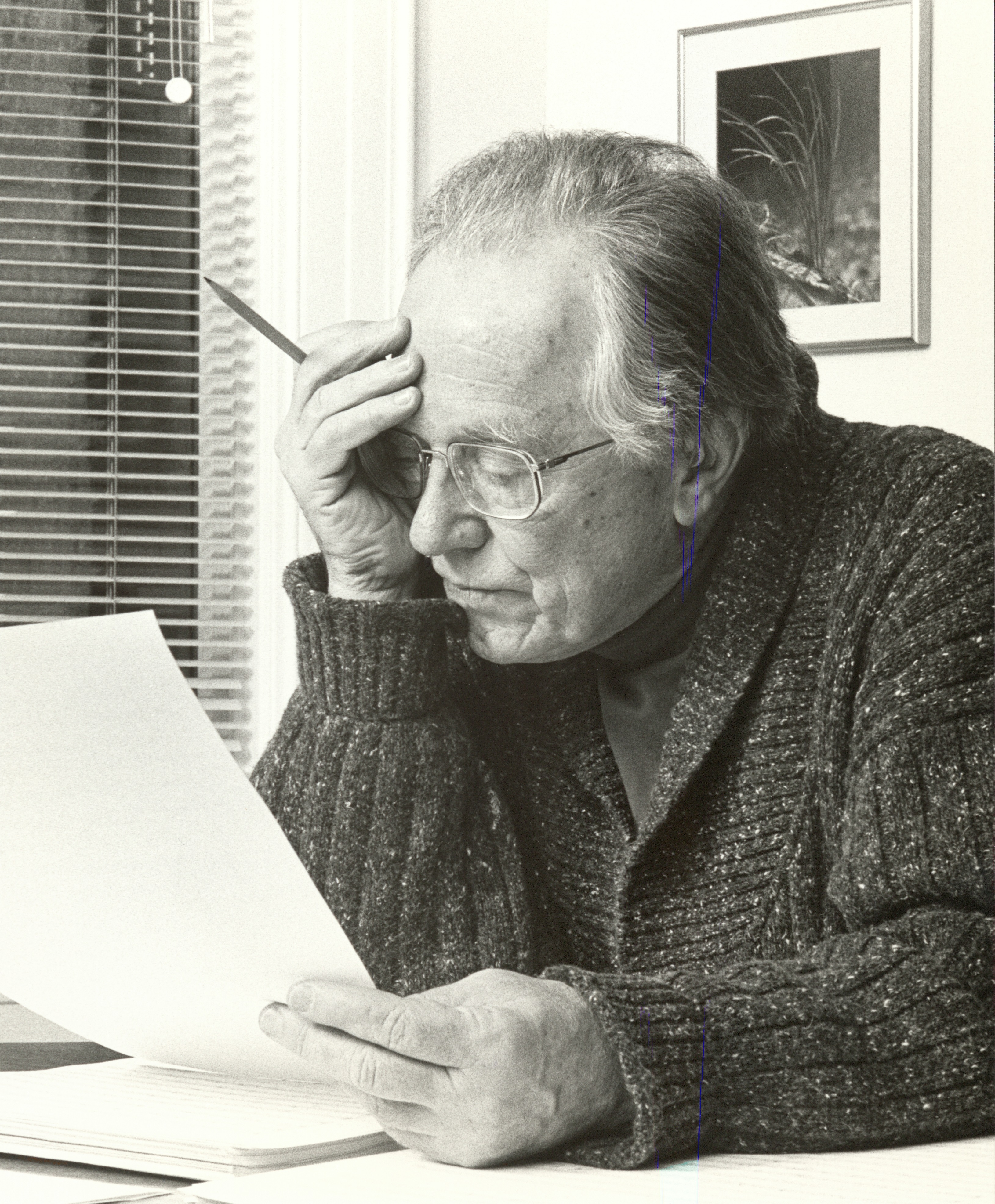
The exhibit features excerpts from Beckwith’s extensive archives, which consists of sketches, drafts, and manuscripts for his compositions; programs, recordings, and press releases from performances of these compositions; correspondence with colleagues and friends; and various writings (articles, lecture notes, radio scripts, etc.). To explore his archives in further detail, reach out to our archivist Rebecca Shaw (r.shaw@utoronto.ca) to arrange access.
Beckwith’s musical education began in Victoria, British Columbia, where he studied piano with Gwendoline Harper (age 8-18), before moving to Toronto to study with Alberto Guerrero, receiving a Bachelor of Music (1947) and Master of Music (1961). He decided to pursue a career in music before finishing his undergraduate degree, and a letter from his father, Harold Beckwith, on January 16, 1946 expresses support for this decision, as well as some comments on his early compositions:
…for what it may be worth (as that of the ‘man on the street’ musically).
“The Frolic” (for Ronaldo) is really clever, if light-ish, and I like it very much.
The other short piece I like even better. There is much more to it of originality and of real musical value. I want to hear it many times more and I feel it will grow on me as I get to hear all there is in it. I liked particularly the interesting way in which it finished.
The longer piece is very interesting but just hearing it a couple of times left me feeling as if I’d been hearing a speech in a language that I only know imperfectly and had only been able to take in enough of to make me realize it was a clever speech. I’d like to hear it a number of times more, so that I could try to understand it better. It is quite definitely interesting.
I hope you are keeping your compositions in some sort of binder—and dated. If not, you should start at once. I should think you could get musical M.S. paper perforated to fit in a loose-leaf binder.
… The announcement of your decision to make music your life work did not surprise me. I agree with it most heartily; in fact, I’d come to the opinion myself that that would be your wisest decision [OTUFM 10-C-2].
The following year, Beckwith wrote Five Lyrics of the T’ang Dynasty (1947), which became one of his most performed compositions. Its first performance—the first performance of any of Beckwith’s compositions—took place at Victoria College Music Club in 1948 by Beckwith, piano, and Arthur Bartlett, tenor, who substituted for Freda Antrobus, soprano at the last minute. Antrobus and Beckwith got a chance to perform the piece later the same year as part of a composers’ symposium at the Eastman School of Music in Rochester, New York. Beckwith captioned a photograph of the performance: “Applause, it’s wonderful! Somebody throw in a towel!”
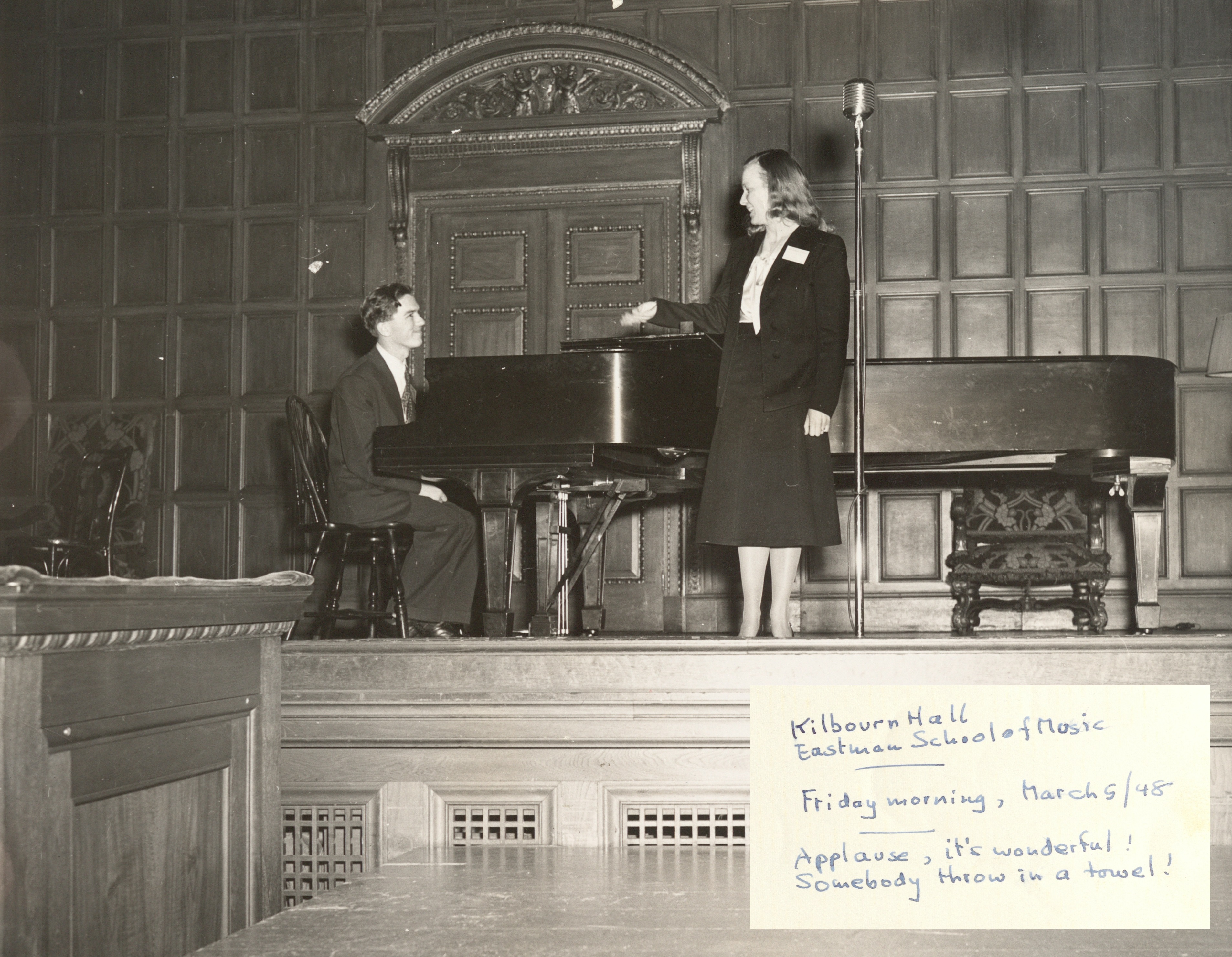
Following his undergrad, Beckwith travelled to Paris to study composition with Nadia Boulanger (1950-1951). Upon returning to Toronto, he joined the staff at the Faculty of Music in 1952 (full time in 1955, dean from 1970 to 1977, and the inaugural Jean A. Chalmers Chair and founding director of the Institute for Canadian Music, 1984-1990); worked at CBC radio as a staff continuity writer and regular freelancer (1953-1963); and participated in numerous organizations to support Canadian composers (Canadian League of Composers, Canadian Music Center, Ten Centuries Concerts, Canadian Opera Company, New Music Concerts, PRO Canada).
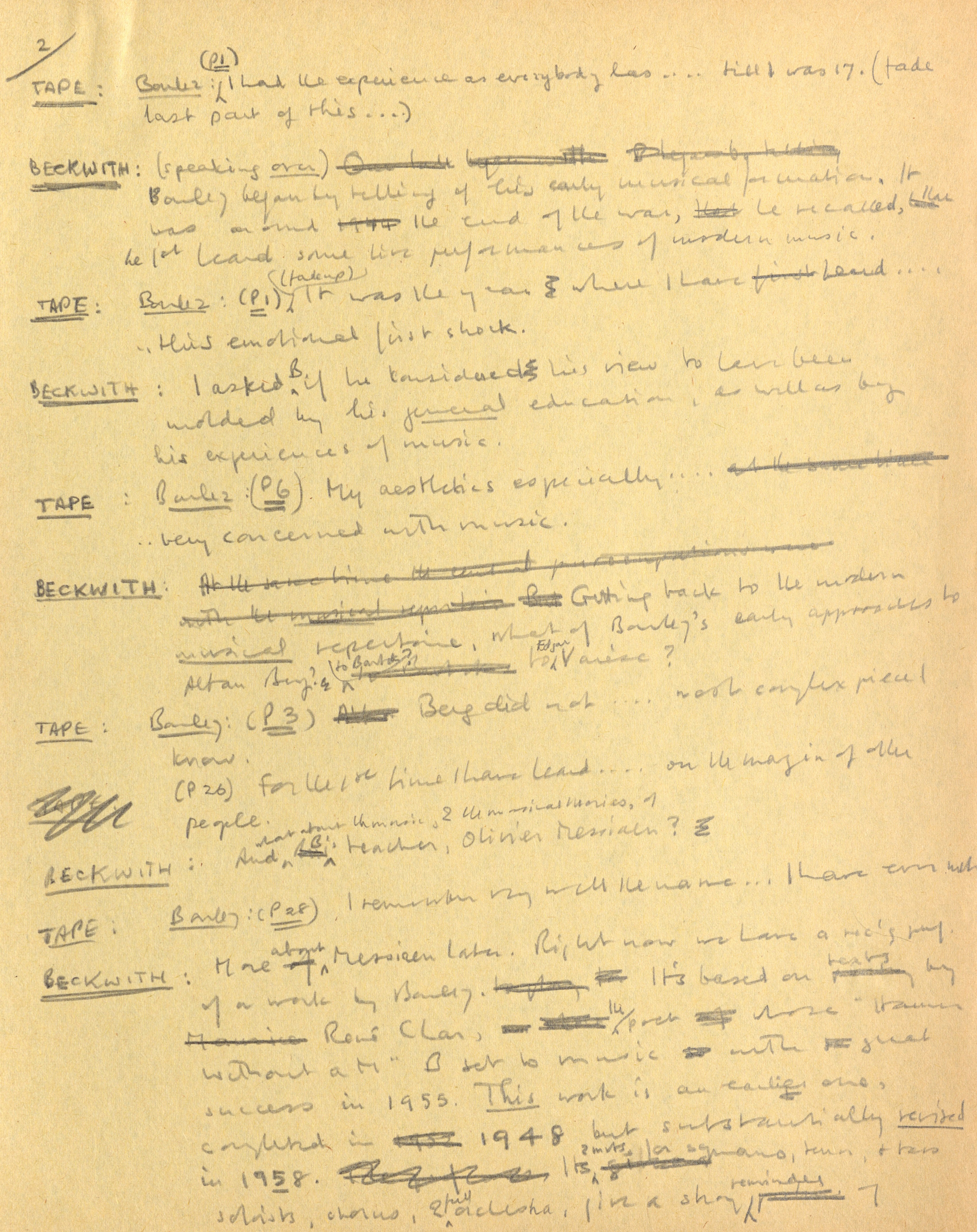
Beckwith wrote his first of four operas—all with librettos by James Reaney—between 1953 and 1958. The one-act opera for soloists and small orchestra, Night Blooming Cereus, premiered on CBC radio (March 4, 1959) and had its stage debut at Hart House Theatre (April 5, 1960).
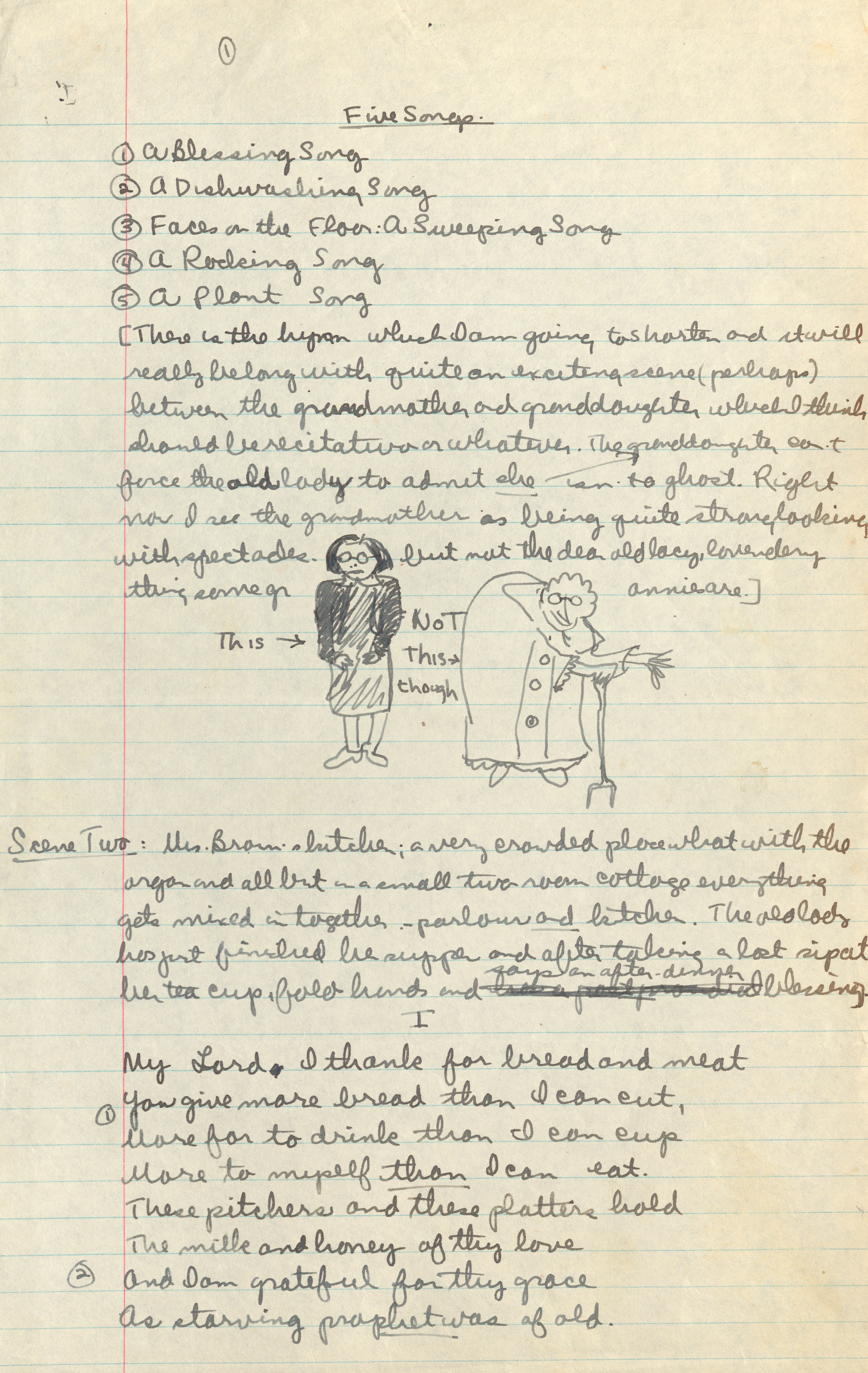
Other writers that Beckwith collaborated with, include Margaret Atwood (the first time when Atwood was still a student for The Trumpets of Summer, 1964, and later for The Journals of Susanna Moodie, 1972) and Jay MacPherson (Jonah, 1963).
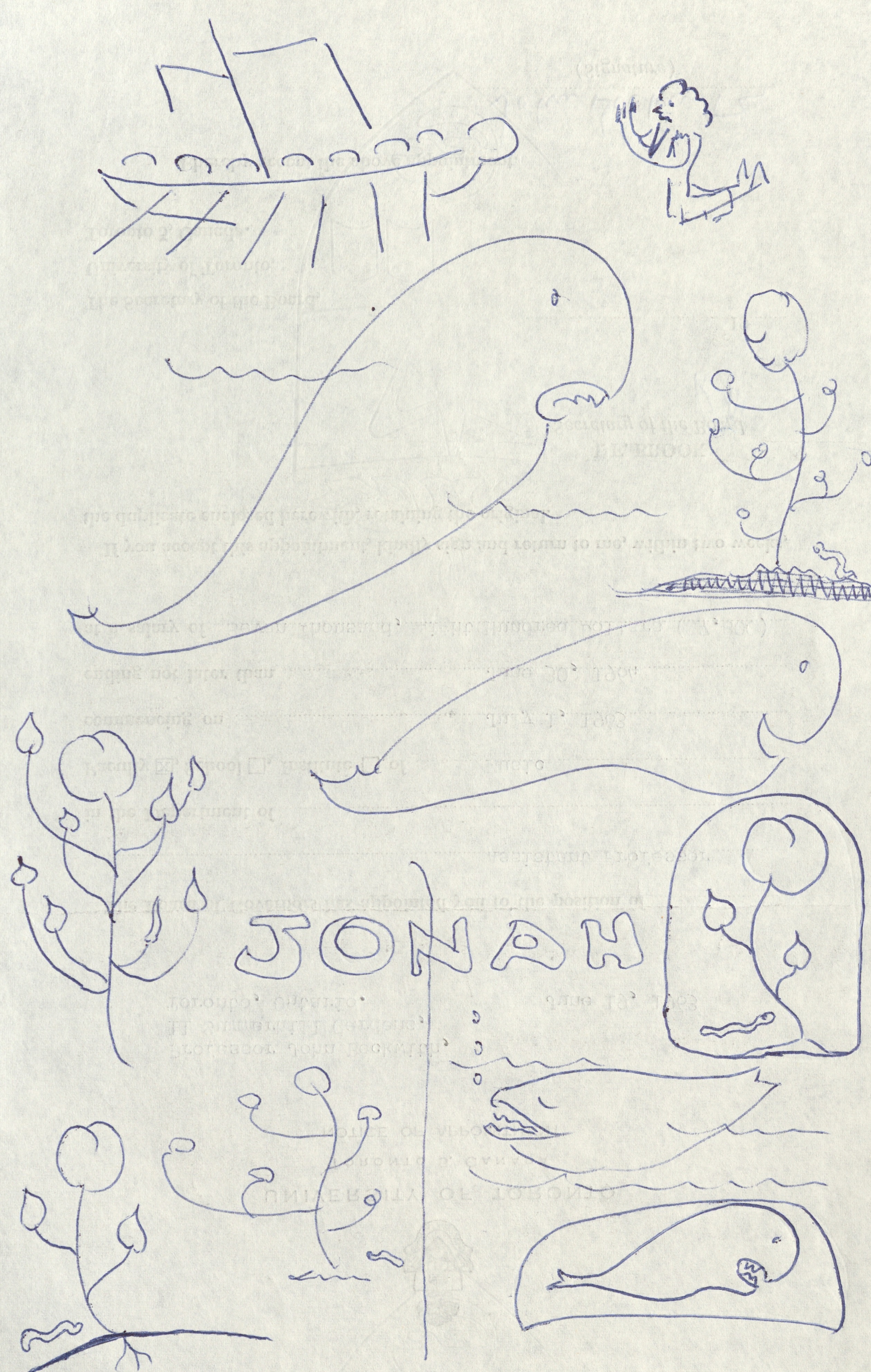
Beckwith’s instrumental compositions include, to name a few:
Three sets of chorales written from annotations that he made in Marcel Dupré’s edition of Bach’s Orgelbüchlein for his graduate seminar Music Literature:
When preparing my class presentations, I often noted in my score instrumental colours I heard in the lines. Out of curiousity in spare moments after my Faculty retirement, I began developing these jottings into instrumentations of favourite chorales. My aim was to have the orchestra emulate the typical registrations of the baroque organ rather than to turn the chorales into symphonic pieces (Unheard Of, p. 229).
A game-piece dedicated to his friend and colleague Udo Kasemets: A Game of Bowls (1999) for percussion ensemble.
After-Images, After Webern (1994) written at the suggestion of friend and guitarist Peter Higham that Webern’s row for his unfinished opus 32 might prove an interesting basis for a composition.
An orchestral collage-style work Round and Round (1992) that “is not meant to be danced to, any more than are the stylized dances of Byrd, Couperin, Bach, Chopin, Ravel, or Juan Campos. It is music of the dance, as Guerrero had put it to me years before…it is music that distills the mood of dancing, that perhaps conveys how dancing makes you feel” (Unheard Of, p. 229).
And, the last composition included in the exhibit, Meanwhile, composed for the 2018 Ottawa Summer Festival where it was premiered by Edana Higham, piano, and Zac Pulak, orchestra.
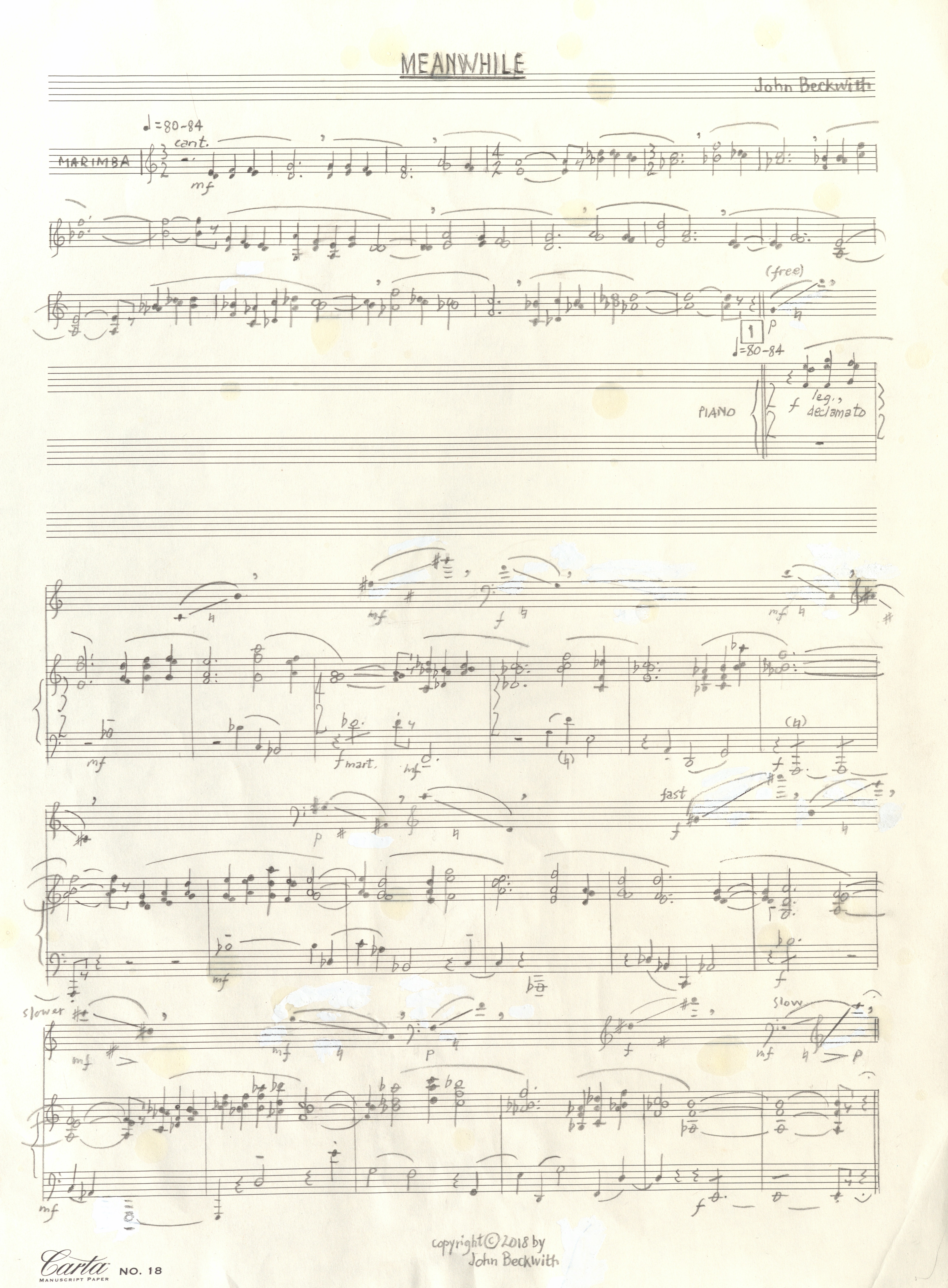
Want to learn more? Stop by the Music Library to view the exhibit, listen to archival recordings on the interactive tablet, and/or book an appointment to view his archives. Want to listen to his music right now? Visit the Naxos Music Library to stream recordings of his compositions. You can also find recordings, scores, books, and more by John Beckwith at the Music Library.